#Felipe IV
Explore tagged Tumblr posts
Note
hewwo ma amie !! i came as stated cus bourbon - habsburg infodump exchange
I would actually want a presentation about mariana de austria ... im a loser who doesnt know much about her ! i read about her when she got to spain and was confused about spanish (that was so real from her) but i dont know more cool stuff about her at all ... so feel free to tell me anything you find remarkable about her !
who is your favourite bourbon ? :3

Thank you for this Question:
Queen Mariana of Austria is known as the Mother of Charles II of Spain and the niece/wife of Philip IV. She was Queen Regent when her husband Philip IV died and ruled on Carlos II's behalf until he was 14. Like Charles II, Queen Mariana was a victim of the classic “decline of Spain” paradigm. She is defined by 19th-century historians as “weak,” “unstable,” and “ignorant” but also “Machiavellian,” “scheming,” “with a German outlook” (meaning foreign), at times “melancholic” because she suffered from migraines, and was overly pious and uninterested in politics because she “dressed as a nun." She was accused of handing power over to her favorites; Jose Everardo Nithard and Fernando de Valenzuela. In reality, She was smart, strategic, strong, decisive, and seemingly tactile. Her favorites played a dominant role in her regency but her strong and decisive personality and her extensive and consistent participation in all aspects of government suggest otherwise. She faced two political crises during her regency the first was in 1669 resolved by her dismissal of Nithard; the second, between 1675 and 1677, ended with Valenzuela’s fall and her exile. There is evidence in state papers to prove that she did not surrender power to them. Speaking of Jose Everardo Nithard, He was Mariana's tutor, friend, and later her confessor. He was made inquisitor General. As for Valenzuela, Known as the palace elf, due to his influence and connections to people in high places. He married a woman who is part the queens valet. He provided Queen Mariana information about gossip and rumors that were circulating in Madrid. Valenzuela got more influencial overtime which created tension between him and the court. He was Mariana's protégé. Their friendship caused controversy and nasty rumors where made about them as a result. The worst one I believe was the rumor of Queen Mariana sleeping with Valenzuela. The fact that people actually believe that rumor makes me angry. Mariana was dressed as a nun because this is the type of dress worn by Habsburg widows. She made a few changes to the garb like having princely folds and lavish materials. Queen Mariana was exposed to the Spanish cultural traditions because Mariana's mother is Philip IV's sister. She was exposed to Italian culture because of two generations of italian empresses. Mariana both observed and participated in court ballets, rituals, and ceremonies; her dance master, Santo Ventura, was highly regarded. Boys received this kind of instruction as well. Leopold I, for example, was an avid consumer and practitioner of theater and music as emperor. At the age of seven, for example, Mariana publicly greeted her parents on their return from the Diet of Regensburg in 1641 by saluting her mother in the Spanish style and her father in Latin. When the fourteen-year-old performed a similar greeting in Trento, this time as queen of Spain, she had had at least seven years of practice. Queen Mariana was educated and spoke Latin, Spanish and German well. Judging by her education and her fleunt spanish, I doubt she struggled speaking spanish. I read somewhere that Queen Mariana as a child loves playing with dolls. She was cheerful, obedient, and lively girl. Her marriage to King Philip IV of Spain was always described as a terrible marriage because King Philip "cheated" on her, their different personalities, and massive age gap. In reality, They had an affectionate relationship and King Philip was loyal throughout their marriage. He described himself as a change man and would give Mariana everything she wanted. They did struggle financially though and at times could get caught in a series of arguments. I mean no marriage is perfect.
Gossip writer Barrioneuvo reports that one day The Queen asked for pastries and commented that she was not served for some days. She was told that the pastry cook would not supply the palace until a large outstanding bill had been paid. She removed a ring from her finger and ordered a servant to exchange it for pastries; Manuelillo de Gante told her to put the ring back on and gave the servant a copper to buy some tarts so that the Queen can finish her dinner.
Queen Mariana was the woman behind Castillio De San Marco, After a pirate attack in June 1668 roused Mariana into action. Queen Mariana was horrified receiving this news because the attack was so brutal. On March 11, 1669, the queen regent issued her decree ordering the viceroy of New Spain to send subsidies to the city. She also added funding for the building of a masonry fortification and additional soldiers. To oversee the project, she sent Don Manuel de Cendoya to St. Augustine as the new royal governor. Her judgement protected and spurred the city’s growth over the following decades. This growth even led to a later governor requesting the same regent queen for a new two-story, coquina Governor’s House in St. Augustine.
Mariana was a good mother-in-law to Marie Louise of Orleans. After the wedding of Marie Louise, Carlos introduced Marie Louise. Marie Louise bowed to her but Queen Mariana grabbed her hands and told her to stand; and said "Call me mother" with a smile.
Mariana in the year 1696 felt pain in her breast turns out she had breast cancer and she tries her best to hide it because she did not want Maria Anna of Nueburg to take over. The pain was unbearable that she asked the doctors to check her breast. When they examined the Queen they found a huge tumor in her breast. Their is no treatment for this and she was offered relics and prayers. When she died.
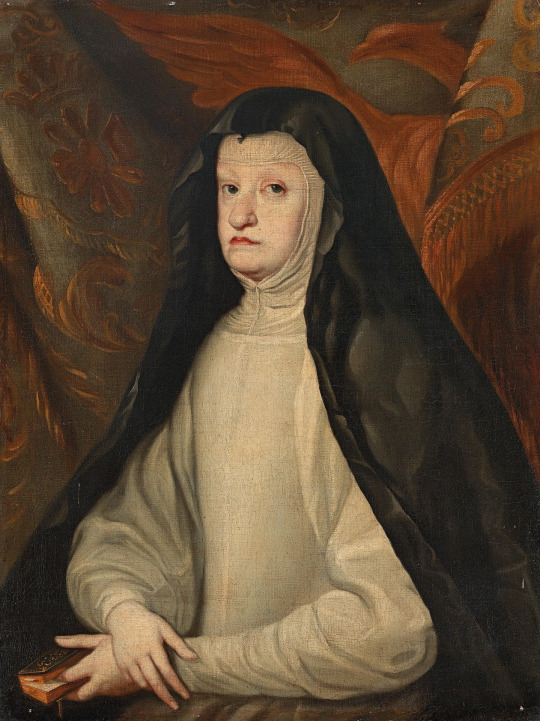
Reports of miracles attributed to her quickly began to circulate. These miracles and her body’s reported “incorruptibility” three years after her death led to a beatification proceeding in the last years of Carlos’s reign. Mariana’s path to sainthood, however, came to an abrupt end when the new dynasty, the Bourbons, took power. Both the beatification proceedings in 1698 and its abandonment in 1702 were as politically motivated as everything else in her life had been
I won't give too much information on her regency because there is a book about it called Queen, Mother, and Stateswoman Mariana of Austria and the government of Spain by Silvia Z. Mitchell. This book is my source about her and the reason why I made this blog so her side of the story will be known. Other sources are from https://governorshouselibrary.wordpress.com/2022/09/22/mariana-de-austria-the-queen-behind-the-castillo-de-san-marcos/?fbclid=IwY2xjawE5D5UBHUpP8HVhtFboR9ZThC2j5LNDLj531pKjmVxtGQbf7A2yMOo2AuNxqEU3Qw
youtube
I like 4 bourbons, Philip V, Luis I, Fernando VI, and Carlos III. If I had to choose one it would be Carlos III because he modernized Spain and imposed great reforms.
Sorry I took so long to reply
#mariana de austria#history#spain#habsburg#house of habsburg#I hate 19th century propaganda#charles ii of spain#carlos ii#justice for mariana de austria#Carlos imposed laws to protect natives and Mariana funded the Castillo de San Marco project#i hate the fact that her brilliant efforts where forgotten#monarquía española#spanish monarchy#monarchy#her story#felipe iv#my queen#Queen mother and stateswoman#book#marianas trench
45 notes
·
View notes
Text
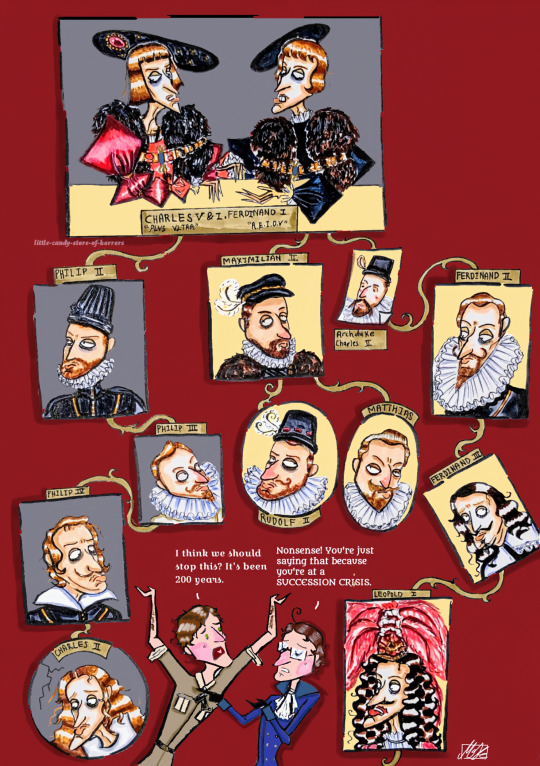
"Bella gerunt alii, tu felix Austria nube!"
Day 6 of @spaus-week 's challenge
"Let others wage war, you, happy Austria, marry!" Was the political strategy of the Habsburgs, and marry did the House of Austria! Infamously, scandalously, sensationally. A mangled wreath of a family tree. We all know this horror story. And we all know the bitter end.
((completed pedigree chart of Habsburg rulers from 1500-1918 here))
After Emperor Charles V&I divided his Spanish and Austrian inheritance ((also gained through his parents' and grandparents' marriages)) to his descendants and those of his younger brother Ferdinand I respectively, the Habsburg dynasty split into two branches. The Spanish and Austrian Habsburgs notoriously intermarried for generations, right up till Charles II of Spain whose heirless death in 1700 sparked the War of the Spanish Succession. The inbreeding and this informal Latin motto behind it has been blamed to hell and back for their implosion, for the physical ugliness that ran in this royal bloodline. But it is not to say the Habsburgs never went to war, nor that dynastic marriage was a political strategy unique to them! But they were, if anything, bloody successful at it seeing how they did rule half of Europe for 200 years, and then a lot of it in the Austrian line for another 200. Before anyone figured out inbreeding was bad it was considered a privilege to marry into the Habsburgs, with Louis XV claiming that Louis XVI's betrothal to Marie Antoinette was marrying the "Daughter of the Caesars", and Napoleon Bonaparte infamously ditching Josephine for Marie Louise. Charles II was a poor sod who took the fall and the mugs were wretched from the same ugly gene being passed around countless times*, but they did wear power and privilege well.
💅✨ Symbolism bc I'm a NERD and this my Category 10 autism event ✨💅 :
Charles V & Ferdinand I's joint portrait based on that propaganda woodcut, behind them the colours of the Habsburg flag.
The Spanish branch, comprising Charles V & I's descendants, is represented with a black background, and the Austrian branch, comprising Ferdinand I's descendants, gold, both colours pulled from their flag, a dynasty intertwined but split in two.
Round frames denote that the individual had no heirs.
Only the most influential ruler on both sides, the King of Spain and the Holy Roman Emperor, are represented as framed portraits, explaining Archduke Charles II's unframed depiction.
The unconventional placement of Charles II of Spain and Emperor Rudolf II's nameplates are a nod to their queerness: their intersexuality and bisexuality respectively.
Ferdinand III's portrait is lopsided because of the losses of the 30 Years War.
Cracks in Charles II's portrait: 🙃🙃🙃
#Was this just an excuse for me to draw the family tree/wreath? YES. Might continue it to Blessed Karl™ *faints*.#That said i literally took three tries to get the Austrian branch right in just this fraction. Nightmare.#spausweek#Charles v#philip ii#philip ii of spain#Philip iii#philip iv of spain#felipe iv#charles ii of spain#Carlos ii#ferdinand i#Maximilian ii#rudolf ii#Emperor Matthias#Ferdinand ii#Ferdinand iii#Leopold i#16th century#17th century#habsburg history#house of habsburg#austrian history#spanish history#historical hetalia#aph austria#aph spain#roderich edelstein#Antonio Fernandez#Hetalia
72 notes
·
View notes
Text

Felipe IV en el Ministerio del tiempo
9 notes
·
View notes
Text

Elizabeth of France, Spouse of Philip IV
Artist: Flemish School
Date: 1615-1621
Description
Elisabeth of France or Isabella of Bourbon (22 November 1602 – 6 October 1644) was Queen of Spain from 1621 to her death and Queen of Portugal from 1621 to 1640, as the first spouse of King Philip IV & III.
#portrait#elizabeth of france#spanish monarchy#felipe iv#flemish school#17th century painting#isabella de bourbon#european#flemish painting#gown#dog#drapery#landscape#spanish royalty
14 notes
·
View notes
Text
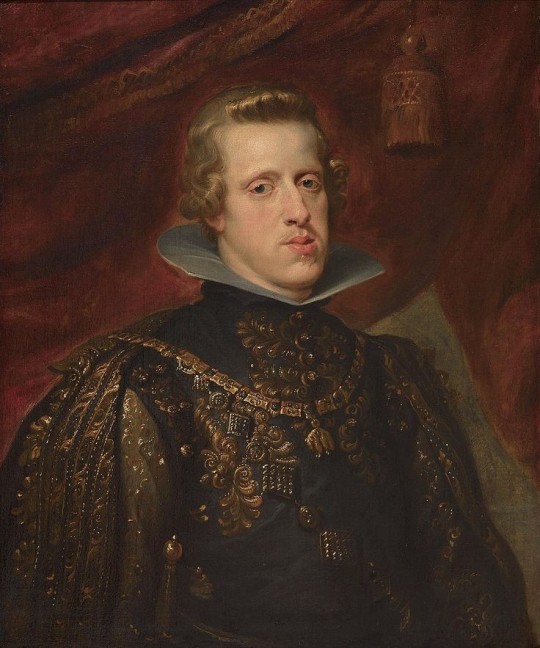
King Felipe IV of Spain. By Rubens.
#peter paul rubens#monarquía española#reyes de españa#felipe iv#rey de españa#viva el rey#casa de austria#kingdom of spain#house of habsburg#pedro pablo rubens#haus habsburg#königreich spanien
20 notes
·
View notes
Text

Sor María de Jesús why would you write that. Why would you tell your good buddy Felipe that God hates the way all his wives and daughters and nieces dress. Sor María you and I both know that is a very rude thing to do to an old man with depression.
#felipe iv#philip iv of spain#habsburgs#serious scholarly historical pursuits#(the book is incomparable realms by jeremy robbins)
14 notes
·
View notes
Text
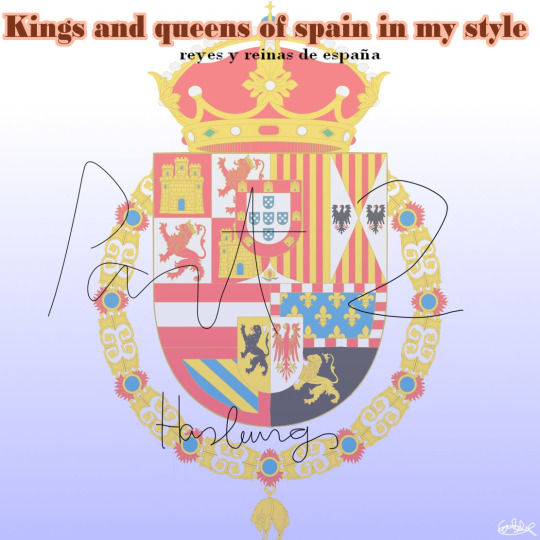


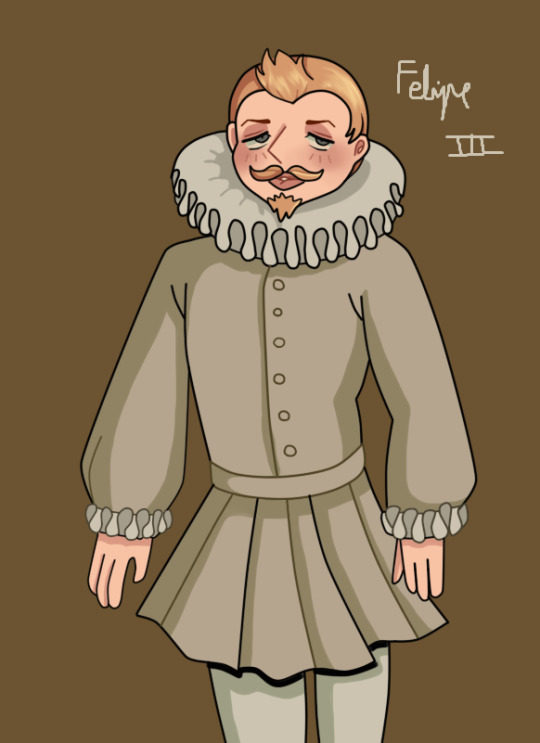
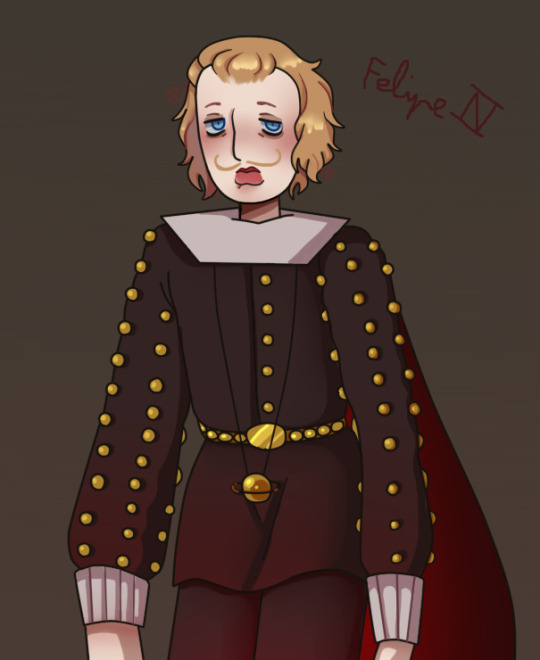
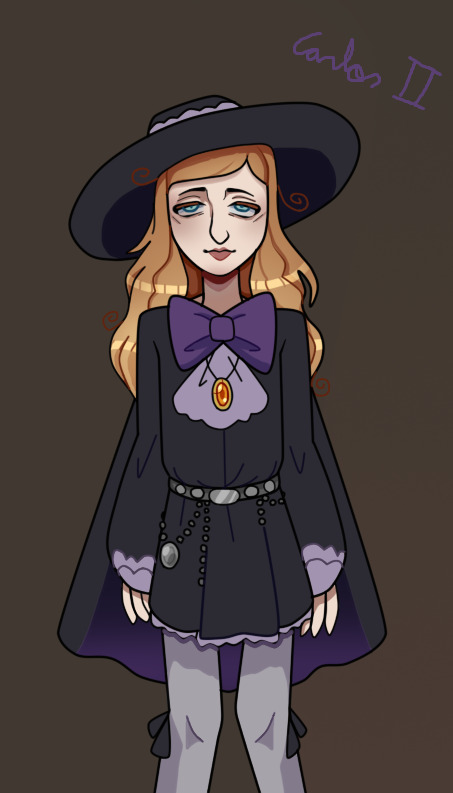
14 notes
·
View notes
Text
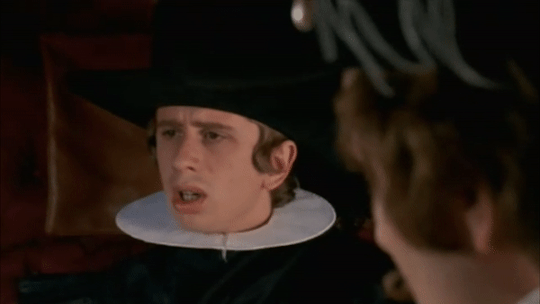

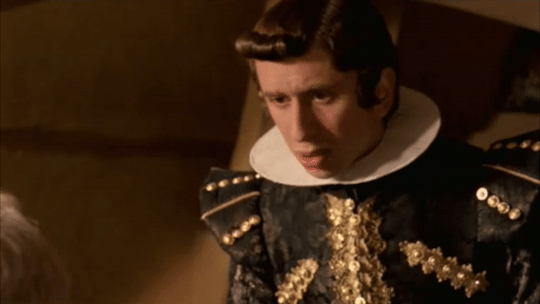
Gabino Diego as Philip IV (part I)
8 notes
·
View notes
Text
Uno de los hechos históricos que más gracia me hacen de Felipe IV es que llegó a prohibir por mandato real que los hombres llevasen la lechuguilla al cuello el 11 de febrero de 1623.
Y me resulta aún más gracioso el pensar que probablemente España se sintiese aliviado con tal medida. No es para menos; imaginaos pasar de un simple cuello a una gorguera con lechuguilla moderada (Carlos I) —que al principio era reconfortante—, y de ahí a una gorguera con cuello alto con una pequeña lechuguilla (Felipe II) hasta la locura de lechuguilla (Felipe III) en la que, si se distraía, le comía la barbilla.
Creo que el impacto es mayor con imágenes.
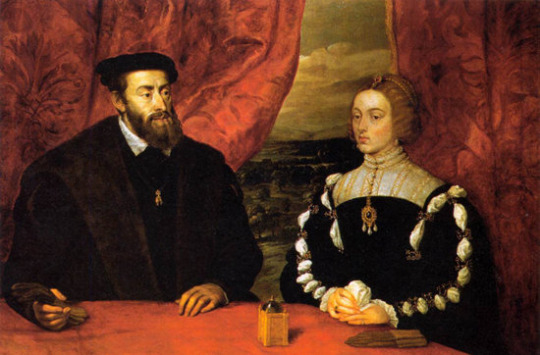
Aunque en la imagen es Isabel de Portugal quien lleva la gorguera con una lechuguilla moderada, casi inapreciable.

Felipe II, en 1565. La gorguera se encuentra oculta, dejando solo ver la lechuguilla.

La locura máxima... A lo largo de todo su reinado.
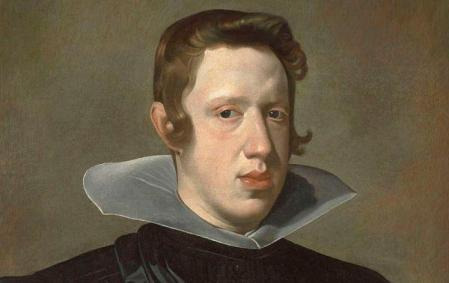
Y después esto, el llamado cuello golilla. En otros retratos de Felipe IV, más mayor, se le puede ver con el cuello valona.
Como curiosidad, Felipe IV lo hizo para reflejar esa lucha contra la corrupción del reinado anterior —vamos, el Rey de las buenas ideas que terminaron mal, como Alfonso XIII—, y huir de las tendencias que exportaba Francia, volviendo a refugiarse en la sobriedad.
De hecho, la lechuguilla llegaba a costar a doscientos reales, mientras que la golilla rondaba los cuatro.
#aph spain#hws spain#historical hetalia#(podéis también ver el claro desarrollo de la prenda en el dibujo de «Don Antonio»)#hay muchos escritos en el Siglo de Oro que se burlan de ella#y no es para menos#felipe iv
4 notes
·
View notes
Text
Salomé con la cabeza de San Juan Bautista (Caravaggio, GCR)
Este cuadro, conservado en la Galería de las Colecciones Reales en Madrid, es una obra maestra el pintor MICHELANGELO MERISI DA CARAVAGGIO, que se considera pintado hacia 1607. Se trata de un óleo sobre lienzo. This painting, which can be seen at the Gallery of Royal Collections in Madrid, is a masterpiece painted by Italian painter MICHELANGELO MERISI DA CARAVAGGIO, around 1607. Oil on…

View On WordPress
#Barroco#España#Felipe IV#Michelangelo Merisi di Caravaggio#Pintura#Pintura religiosa#Segundo Conde de Castillo (Virrey de Nápoles)#Siglo XVII
1 note
·
View note
Text

The family of Philip IV of Spain
In the summer of 1662, Felipe IV attempted but failed to reconquer Portugal. Despite his loss, he refused to grant Portugal its independence. Meanwhile, Queen Mariana, who had recently given birth a few months to her deceased infant daughter, continued to carry on with her royal duties. The focus was on Carlos, the prince of Asturias, who could now stand but had difficulty walking. He used a mini carriage to get around the palace and was often carried and assisted by his servants.
"Margarita is as beautiful as ever, and she is growing into a young woman," Queen Mariana commented as she observed Margarita playing with her younger brother. "Let us pray that our children will experience the joys of life." King Philip IV replied While the royal couple observes their children, they are interrupted by Jose Everardo Nithard, Queen Mariana's confessor.
Jose Everardo Nithard bowed to the royal couple and said, "Your Majesty." "It is a pleasure to see you again, Padre," Queen Mariana replied.
Carlos and Margarita stopped playing when they saw José Everardo Nithard. Margarita approached the confessor and bowed to him as a sign of respect. Carlos, on the other hand, stared at the confessor.
A story I created for the fanart, the only thing that is historically accurate in this story is the first paragraph.
#history#house of habsburg#mariana de austria#charles ii of spain#habsburg#carlos ii#art#spain#17th century#please like and reblog#early modern history#my artwork#artists on tumblr#digital artist#historical accurate outfits#they are so cute#look at them#17th century art#pink aesthetic#royal family#royal life#philip iv of spain#felipe iv#spanish monarchy#my masterpiece#made the background myself#i hope you all like it#look at the details#my art
48 notes
·
View notes
Text

Technically for @cparti-mkiki 's birthday 🥳 but tbh this one is funny as hell still

#17th century#my art#philip iv#Philip iv of spain#Felipe iv#historical fanart#history art#history shitposting#mariana of austria#Sliding this into your hole Quintus hope you remember and like this one still!
22 notes
·
View notes
Photo
OMG, they look like twins!
To think he could've been king of Spain!

Juan Bautista Maíno
Portrait of Fray Alonso de Santo Tomás, c. 1648-49
Museu Nacional d'Art de Catalunya, Barcelona (Inv. No. 024370-000)
THE KING’S BASTARD
Friar Alonso de Santo Tomás (1631–1692), born as Alonso Enríquez de Guzmán y de Orozco, was an illegitimate son of King Philip IV of Spain with Constanza de Ribera y Orozco, a lady-in-waiting of Queen Élisabeth of France, who was rapidly married to José Enríquez de Guzmán, gentleman-in-waiting of the King. Alonso became an orphan at the age of 3, and was raised by his adoptive father’s brother, Antonio Enríquez de Guzmán y de Porres, Bishop of Málaga and later Viceroy of Aragón.
In 1646 Baltasar Carlos, Prince of Asturias and only male heir apparent to the Spanish throne, died aged 16. Philip IV, devastated after his loss, intended to legitimize Alonso and to welcome him at court. The youth, surprisingly, refused those honors, and decided to take holy orders, becoming a Dominican friar in 1648.
Nevertheless Friar Alonso didn’t lose the royal favor of Philip IV, and by 1661 was named Bishop of Osma, two years later Bishop of Plasencia, and finally Bishop of Málaga (1664–1691). Friar Alonso was highly regarded as a theologian and orator, he published several theological essays and became a generous patron of the arts, protecting artists such as the sculptors Pedro de Mena and Alonso Cano. His portrait by Maíno was probably commissioned soon after he entered the Order, and is one of the painter’s last works.

• Details of a portrait of King Philip IV of Spain, aged 18-19 (Velázquez, c. 1623-24) & his son, Alonso de Santo Tomás, aged 17-18.
167 notes
·
View notes
Text
Felipe IV
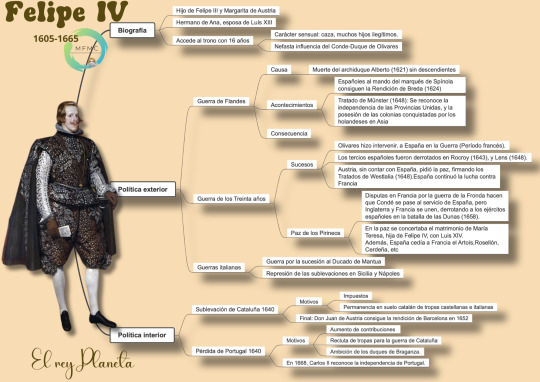
View On WordPress
0 notes
Text
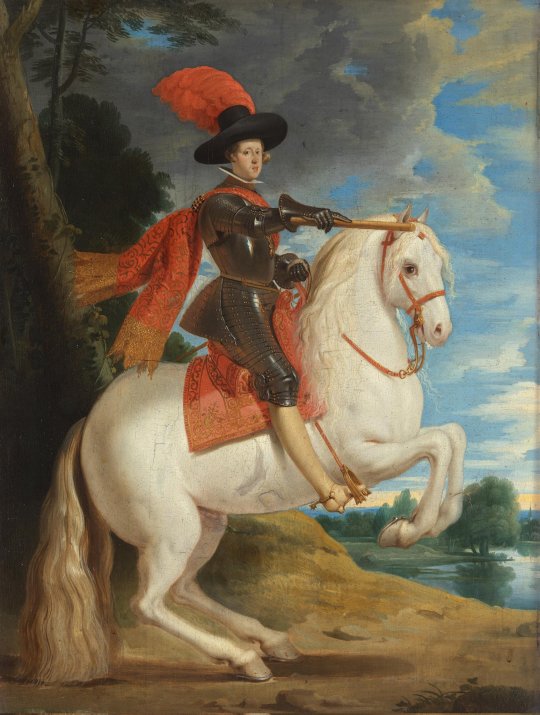
Felipe IV of Spain by Gaspar de Crayer.
#monarquía española#reino de españa#reyes de españa#casa de austria#felipe iv#rey de españa#retrato ecuestre#viva el rey#viva españa#kingdom of spain#house of habsburg#equestrian portrait#in armour
10 notes
·
View notes
Text
El rey planeta visita Sevilla
Aquí os dejo mi intervención en el programa de Radio Andalucía Información, «Patrimonio andaluz» del día 14/01/2024 https://barbararosillo.files.wordpress.com/2024/01/felipe-iv-en-sevilla-radio.mp3

View On WordPress
0 notes